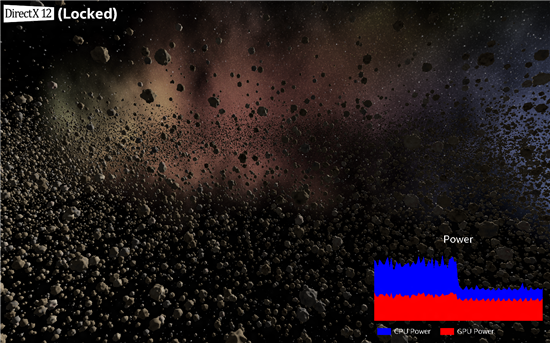Microsoft’s DirectX12 API will not only bring countless hours of fun to many a gamer out there, it will also make tree huggers and polar bears quite happy.
The new API is said to be up to 50% more power efficient than DirectX11. However we do not know how it stacks up against AMD’s proprietary Mantle API at this point.
Some caveats may apply
The new API was demonstrated at Siggraph 2014, but the choice of hardware left much to be desired. Microsoft and Intel demonstrated the new API on a Surface Pro 3 tablet, which is powered by a Haswell processor with Intel HD 4400 graphics.
The demonstration included a vast 3D scene with about 50,000 asteroids moving about the place. That translates into a lot of geometry, even though the meshes don’t appear to be heavily subdivided. On the other hand there aren’t that many effects and there is only a single source of light.

In any case the demonstration showed an efficiency improvement on the order of 50 percent. DirectX 12 offloaded part of the load to the CPU, so the CPU crunched the numbers dealing with physics.
Test scenario - the exact opposite of Mantle?
It is hard to say what sort of gain to expect on a proper gaming rig with powerful discrete graphics, or a CPU-bound configuration.
AMD’s Mantle API has demonstrated the biggest gains in CPU-bound tests. DirectX 12 should also improve CPU utilization, but the Surface Pro 3 does not paint the full picture, as it has a relatively weak iGPU coupled with a speedy processor. In other words the demo used a completely different approach compared with Mantle, as AMD was eager to test Mantle on CPU-bound hardware and software.
“The power savings are coming directly from the efficiency improvements that inherently come with using the DirectX 12 API. Lower level access to the hardware than ever before allows applications to significantly improve their CPU utilization, enabling them to draw extremely complex scenes at a significantly reduced energy cost,” Microsoft programme manager Andrew Yeung said in a blog.
Microsoft also pointed out that DirectX 12 could deliver a performance uplift of more than 50% in the same thermal envelope. Once again this will not apply to high-end gaming PCs, as they do not face nearly the same power and thermal constraints as mobile processors.
In any case the numbers are encouraging, but what we really want to know is what DirectX 12 has to offer on gaming configurations rather than tablets.




